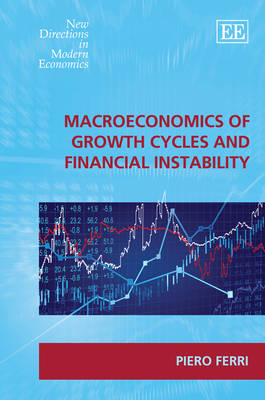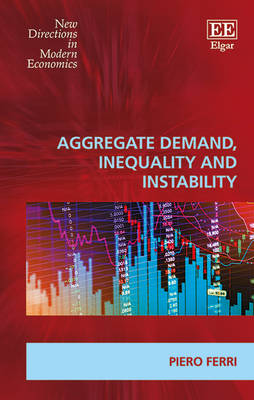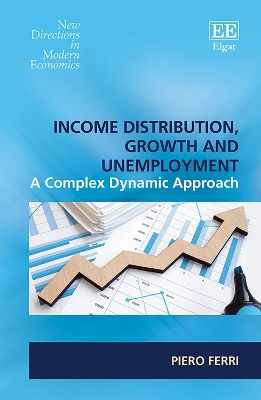New Directions in Modern Economics
4 total works
Piero Ferri presents a macroeconomic study of a monetary production economy within a dynamic paradigm, where instability phenomena and inhibitive policy measures interact, and where the forces that self-regulate markets cannot prevent the occurrence of instability problems. Underpinning this paradigm is the idea that such volatility is the result of endogenous forces; shocks can trigger instability but cannot explain its persistence. As endogenous instability has multiple causes and mechanisms of transmission, the author adopts various perspectives - both analytical and by means of simulation - in order to explore and characterize the phenomenon of growth cycles and instability.
This challenging book will prove a thought-provoking read for students and scholars of macroeconomics, heterodox economics, labor markets and money, finance and banking.
Contents: Preface; Introduction; Part I: The Background; 1. Dynamics in the Medium Run; 2. Financial Instability; 3. Macroeconomics, Uncertainty and the Fallacies of Composition; 4. Heterogeneity and the Status of Macroeconomics; Part II: The Markets; 5. The Nature of the Labor Market; 6. The Role of Imperfect Competition; 7. Policies versus Self-Adjustment; Part III: Endogenous Dynamics; 8. A Dynamic Macro Model; 9. Uncertainty, Expectations and Learning; 10. Inflation, Deflation and the Phillips Curve; Part IV: Growth Cycles, Income Share and the Financial Instability Hypothesis; 11. A Growth Cycle Model; 12. The Role of Labor Share; 13. Towards a Stochastic Switching; Part V: Concluding Remarks; 14. Lessons; 15. The Task Ahead
Unlike Piketty, the author analyzes the relationships between instability and inequality, and the feedbacks from the latter to the former, in a system approach where real and monetary factors interact to generate complex patterns. The book does not discover 'iron laws' because the results depend on the nature of the model, the values of the parameters and the policy pursued. However, the role of inequality is proven to play a decisive role in shaping dynamics. Finally, the author discusses the link between medium and long- run problems, and the challenges that remain to be faced.
Piero Ferri's original application of economic principles to the topic of inequality will make this book essential reading for all economists, particularly those of a macro orientation.
This book stresses the necessity of including what has been recently discovered about Minsky's financial instability hypothesis into his lifelong research program, in order to obtain a more complete picture of both his vision and his analytical apparatus. It seeks to move beyond a discussion of Minsky's original ideas, to verify how they are capable of meeting the challenges derived from the modern evolution of the economy. Developing a meta-model based on regime switching, Piero Ferri examines how the different financial instability hypotheses can be accounted for.
Researchers and advanced students in macroeconomics and finance will greatly benefit from the exploration of how Minsky predicted the 'Great Recession', and why his work is of fundamental relevance today. Economic policy makers will also find this book to be a useful tool in discovering methodological innovations to aid further financial recovery from the 2008 economic crisis.
Written in a succinct yet comprehensive style, Piero Ferri begins by addressing the basic principles, followed by an in-depth look at growth cycle models and how the Minsky–Harrod integrated model would help to unravel the current complexities. The empirical analysis reaches insightful conclusions by justifying the existence of a variety of results and by studying the distributive loop in a dynamic context which is prone to instability.
Teachers of macroeconomics and scholars will find this an invaluable read and will benefit from the practical study and results. Researchers interested in labour economics and political economy will also find this a thought-provoking book.



